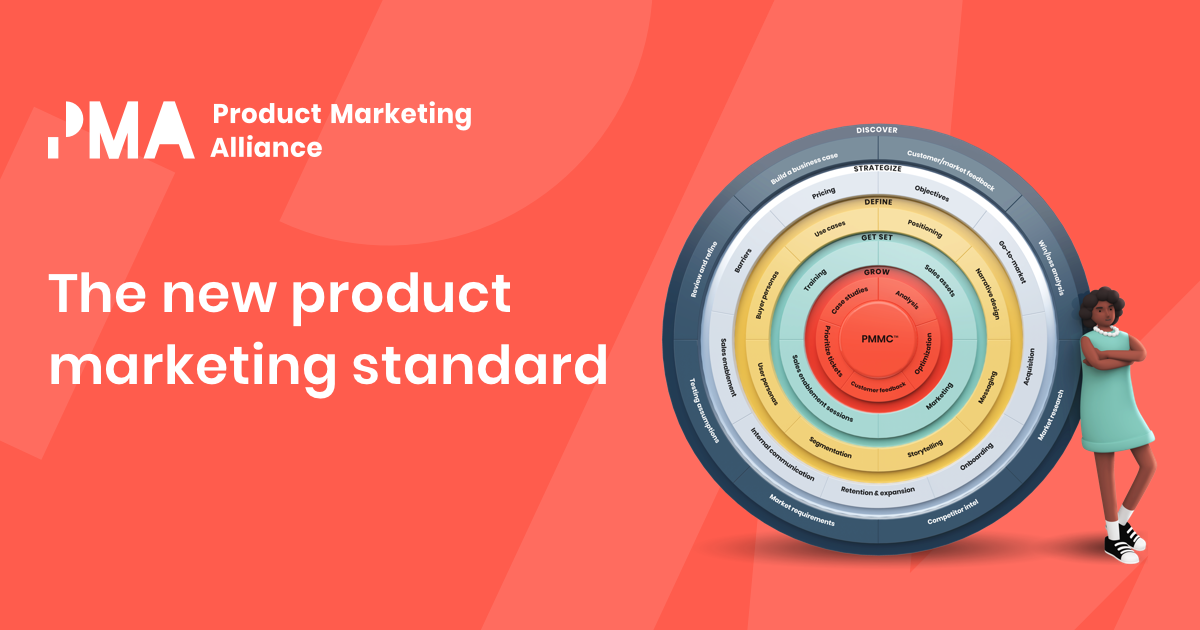There are a variety of different ways in which organizations will adapt their company culture to market their product or service in a certain way. The most common being customer-led, community-led, sales-led, and, of course, product-led.
So, there are many different ways in which you, as a product marketer, may need to adapt your marketing techniques to fit the needs and specifications of your organization.
It can be tricky to pinpoint how to change your approach, depending on whether you’ve worked in that kind of environment before.
In this case, specifically, what does it take to be a product-led product marketer and how can you adapt your marketing approach for success? 🤔
In this article, we’ll look at the kind of things you can do to succeed, including:
- Focusing on the customer experience
- Developing a strong value proposition
- Building and maintaining a user-centric mindset
- Using data to drive your marketing decisions
- Prioritizing user acquisition and engagement
- Maximizing user retention
- Staying up to date with industry trends and best practices
What is product-led marketing?
Product-led marketing as a term is easy to understand. It’s a business and go-to-market strategy companies will use to put their product at the forefront of their marketing and sales techniques.
Leading with the product first, so it’s at the center of the customer experience and letting it sell itself.
Learn more about the components of a product-led strategy, along with why it’s important, the types of product engagement, and more, in our in-depth guide. 👇

Focusing on the customer experience
As mentioned in the first point, product-led marketing is all about making sure that the product is right in the middle of the customer experience so they’re witnessing the product’s value right from the get-go.
It’s vital that while you’re focusing on the product and conveying its value, you’re also ensuring that your customer understands its value, too.
After all, you can explain your product’s benefits ‘till you’re blue in the face, but if your customer doesn’t believe it themselves… they ain’t gonna buy it.
How can you do this?
Reduce cognitive load
Reducing customers’ cognitive load - or the brain space required to understand something - is essential when it comes to improving the customer experience, reducing churn, and increasing sales.
One way you can do this is by leveraging in-app messaging to let your product communicate with your customer. In-app messaging can be used for things like product tours, upsell prompts, chatbots, product notes, and splash screens.
Each of these instances is great for creating messaging and user experiences that are contextual and personalized. This then not only increases the chance the prospect will convert but also increases existing customer retention, too.
Remove risk and pressure
Remove the pressure and allow your customer to enjoy your product risk-free. This allows them to focus on how much value they’re getting from your product, without worrying about external factors like costs or time limits.
You can do this in many different ways. For example:
- By using a freemium or free trial model.
- Extending the return period and refunds on physical products.
- Using guarantees to show confidence in your product (i.e. “your money back or product replacement guaranteed”).
- Not overhyping your product - this can remove trust. Strike the balance between a strong assurance or guarantee, and making your product feel too good to be true.
Developing a strong value proposition
Product-led growth is all about letting your product communicate its value to the customers. But in order to use your product, they need to initially understand why it’ll help them in the first place. So, it makes sense to create a powerful value proposition that’ll capture attention and interest, to keep your customers engaged.
Time is of the essence when communicating your value to a prospective customer; research has suggested you have between 5 to 30 seconds to hold the attention of a visitor to your landing page before they take their custom elsewhere.
So, you better make sure you do it right.
Gain insights into how to build a strong value proposition with our comprehensive guide. 👇

Building and maintaining a user-centric mindset
Staying close to your customers is a huge part of why so many platforms are so successful. Customer-centric processes are vital to product build but you’re not going to understand your customer overnight - it’s an incremental process.
A way you can do this is through feedback loops. Feedback loops are a fast way to incorporate your user feedback into development processes.
The idea here is that whatever way of working your team practices, these loops serve as ‘checkpoints’, effectively saying to your user at defined points: what do you think of this?
The benefits of doing this are clear. They can help to:
- Reduce the amount of time you might need to build, implement, or change something.
- Remove your own personal biases and assumptions of what a customer might want.
- Reduce costs, as getting feedback early prevents unnecessary builds.
- Boost adoption and usage because, if your product is on point faster, the effects can be felt immediately.
Feedback loops can also help to simplify things depending on which ‘space’ you’re working in at the moment.
In the problem space - is there a problem that your customers have?
In the solution space - which solution best solves the problem users have?
In both sets of circumstances, feedback loops will spark new ideas and challenge your assumptions. According to UserTesting, any feedback loop should have three main stages.
- Stage one: Collate feedback
- Stage two: Analyze feedback
- Stage three: Make informed decisions
Feedback loops can also be implemented after a launch - after all, why would you stop wanting to get useful feedback?
You can also be transparent with those users who have left you feedback - letting them know what’s happening with their suggestions, strengthening the trust between the org and your users.
With this, try to keep people posted. It can sometimes be a little offputting to feel like the views you’ve put forward have disappeared into the abyss.
There’s never a right or wrong time to start implementing a more structured feedback cadence - and, at the end of the day, it gets us closer to the core tenet of product-led growth: customer-centricity.
Using data to drive marketing decisions
Data-driven marketing is one of the core ‘arms’ of product-led growth. Using metrics and measurements carefully helps to align teams, and provide a common goal to work towards.
Using product analytics helps to understand what’s working and what isn’t, and backing up your theories with data and numbers ensures you’re doing it correctly. This then eliminates bias.
While metrics and indicators certainly aren’t one size fits all, there are some common areas that are key to pay attention to. However, being customer-centric means measuring all aspects of the customer journey, not just trying to reduce it to a single outcome. This helps an organization work more consistently and effectively together, cross-functionally.
One of the most popular frameworks for ensuring you are focusing on your data to drive your marketing decisions is what is commonly referred to as the “pirate metrics”. The name helps to remember the acronym, which is AARRR.
These stand for:
- Acquisition - Users come to your solution.
- Activation - Depending on your chosen criteria, a positive first experience in which users see the value.
- Retention - Users are active with the product and revisit and reuse
- Referral - Delighted users/advocates spread the word.
- Revenue - Delighted users carry out something monetizable.
We go into this framework, along with the most important metrics to track, in our Product-Led Growth Certified: Core course. More information on this is below.

Prioritizing user acquisition and engagement
Because acquisition is an inherent part of the product, you shouldn’t need such a hefty marketing budget. So, you’ll need to angle for more revenue from existing customers by providing a delightful user experience.
Get a prospect to see the value of your product > they convert > they engage more with your product > they recommend your product to a peer > then the cycle continues.
This means maintaining a customer-centric marketing approach that engages with them in a product-led way.
For example, the user might not discover the product via an ad, more likely word of mouth recommendation, research, article, or blog post. Once a user signs up, this becomes a PQL or product-qualified lead.
A PQL is a potential customer who has made significant moves with a product, and earmarks them as likely to transition to a paying customer - typically using customer behavior as a guide to decipher when they might be ready to buy.
It’s often reported that PQLs close at significantly higher rates than MQLs (marketing qualified leads), some sources claiming as much as 3 to 4 times higher than marketing leads. As customers have already experienced your product and know the value that it brings - a user has experienced that ‘eureka’ moment which is a realization of value.
Self-serve onboarding ensures that little support is needed. After conversion, engagement, retention, and advocacy strategies will then be central to ensure that the user stays put and perhaps promotes the product themselves - this is where sales might step in, to help scaffold and support growth, rather than driving it directly.
Take a look at Zoom’s membership and pricing structure - their ‘basic’ package is thought out to give users a taster of the product while limiting their meeting length and collaboration functions.
After using it for a while, a user might reach a bottleneck, giving way to that ‘aha’ moment, where they level up to a paid membership.
Zoom also had that real moment of virality - as people used and shared the product, its presence gained serious traction - that exposure leading to more sign-ups and leads. Making it easy and efficient to meet online was a real problem that Zoom stepped in and solved, propelled even further by the COVID pandemic.
Maximizing user retention
In an article on top tips to boost your customer retention, Suresh Kondamudi, Co-Founder and CTO of CleverTap, explained something called the ‘leaky bucket problem’ which explains how user acquisition turns into customer churn.
He said, “you fill your bucket to the brim with lots of shiny new users. But, slowly and surely, 'drip' 'drip' 'drip'. Before you know it, you've lost 70% of newly acquired users within seven days.”
So, how do you fix the ‘leaky bucket’?
According to Suresh, there are two areas to the solution: “Effective engagement and providing a delightful customer experience”.
If you want the full details of how to boost customer retention, check out his article. To save you some time, the TL;DR of this is that you need to develop some building blocks for effective customer engagement that also works on providing great experiences for the customers.
Step one: Think about who you want to engage with, what content you engage with, and when you choose to engage.
Step two: Profile your customer segmentations.
Step three: Build a strong segmentation suite.
Ultimately, getting to know the absolute core of your customer wants and needs of who they are, and how they liked to be engaged with, is going to help you keep them as loyal consumers of your product, effectively increasing your user retention.
Staying up-to-date with industry trends and best practices
When you’re leading with your product, staying on top of trends is super important. This is because your customers are always going to be looking for fresh updates to continue meeting their needs in different and innovative ways.
If the first thing they see is an outdated product or service, you can bet your bottom dollar that they’ll be searching elsewhere at the next opportunity.
Stay informed about how the market is changing to build that credibility for your brand, improve the value of your product, and prove to your customers why purchasing your product was the right choice.
Check out our article below to understand why market trends analysis is so important, how to identify market trends, and how to build your business strategy around these trends for optimal results.

Wanna take your product-led knowledge to the next level?
Luckily for you, we’ve partnered with our sister community, Product-Led Alliance, to bring you the most comprehensive course on all things product-led growth.
Product-Led Growth Certified: Core has been built by the best of the best within the product industry and will help you:
👊 Have a clear understanding of the breadth of product-led marketing approaches.
🔥 Gain in-depth knowledge of the current state of PLG and how it came to be.
🚀 Be able to confidently apply the common components of PLG with a proven strategy.
👊 Up-skill yourself in the core competencies required for getting started in PLG.
Learn from the likes of Atlassian, Zenjob, and Mixpanel, to learn how to emphasize your users, empower your product teams, and prioritize your product’s value.
Get Product-Led Certified

















 Follow us on LinkedIn
Follow us on LinkedIn




.svg?v=3c4c23cd72)